
~~~~~~~~~~~~~~~~~~~~~~~~~~~~~~~~~~~~
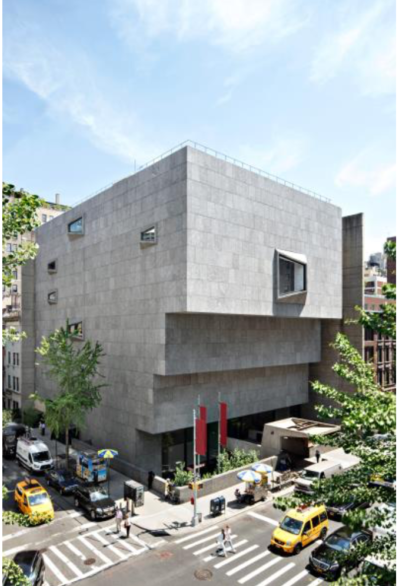
THE FRICK REFRAMED: INSTALLATION PLAN
REVEALED FOR FRICK MADISON,
THE INSTITUTION’S TEMPORARY HOME
BEGINNING EARLY 2021
PRESENTATION PROVIDES ACCESS TO COLLECTIONS
IN A FRESH CONTEXT,
OFFERING NEW PERSPECTIVES
ON FAVORITES AND RARELY SEEN WORKS
——————
September 30, 2020 — The Frick Collection announced details of its two-year installation plan for Frick Madison, the institution’s temporary home while its historic buildings at 1 East 70th Street undergo renovation. Anticipated to open in early 2021 and remain operating for the duration of construction, Frick Madison will occupy the Marcel Breuer–designed building on Madison Avenue (left), formerly home to the Whitney Museum of American Art and most recently The Met Breuer.
For the first time, audiences will be able to enjoy a substantial gathering of highlights from the collection outside the domestic setting of the Frick’s Gilded Age mansion, only five blocks away. In a departure from the Frick’s customary presentation style, works will be organized chronologically and by region. The exhibition will feature treasured paintings and sculptures by Bellini, Clodion, Gainsborough, Goya, Holbein, Houdon, Ingres, Piero della Francesca, Rembrandt, Titian, Turner, Velázquez, Vermeer, Whistler, and many others, alongside impressive holdings in the decorative arts. Rarely displayed works will include important sixteenth-century Mughal carpets and long-stored canvases from the famed series by Jean-Honoré Fragonard, to be shown together in its entirety for the first time in the Frick’s history.
—————

Jean-Auguste-Dominique Ingres, Comtesse d’Haussonville, 1845, oil on canvas, The Frick Collection, New York
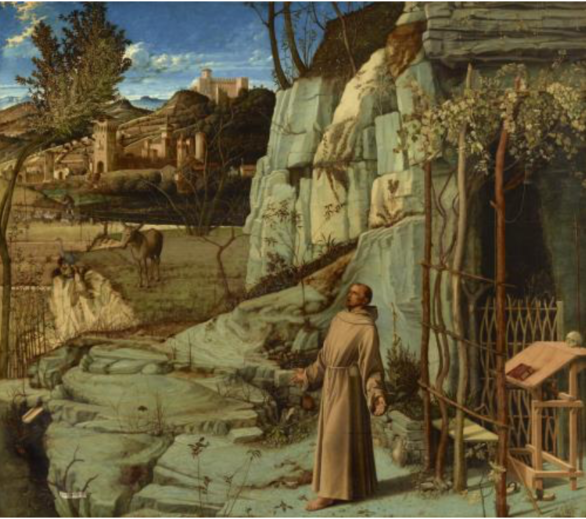
Giovanni Bellini, St. Francis in the Desert, ca. 1476–78, oil on panel, The Frick Collection, New York
The installation is organized by the Frick’s curatorial team, led by Xavier F. Salomon, Deputy Director and Peter Jay Sharp Chief Curator, with Curator Aimee Ng, guest curator Giulio Dalvit, and former Curator of Decorative Arts Charlotte Vignon, now director of the Musée National de Céramique in Sèvres. The plan has been created in consultation with the Frick’s longtime exhibition designer Stephen Saitas and Selldorf Architects, the firm responsible for the institution’s building project.
Comments Ian Wardropper, Anna-Maria and Stephen Kellen Director, “We are thrilled that the public will be able to continue to enjoy these great works of art during the renovation and enhancement of our permanent home at 1 East 70th Street, a time when they otherwise would be inaccessible. Audiences will be able to experience the collection reframed in an exciting new way. The minimalism of Marcel Breuer’s mid-century architecture will provide a unique backdrop for our Old Masters, and the result will be a not-to-be-missed experience, one that our public is sure to find engaging and thought-provoking.”
~~~~~~~~~~~~~~~~~~~~~~~~~~~~~~~~~~~~
NEW PERSPECTIVES ON OLD MASTERS
The Frick Madison installation will be presented across three floors of the Breuer building, with paintings, sculptures, and decorative arts organized by time period, geographic region, and media. Highlighting strengths in particular schools and genres, the display will present the collection in galleries dedicated to Northern European, Italian, Spanish, British, and French art, setting the stage for rooms dedicated exclusively to works by individual artists, including Vermeer, Rembrandt, and Van Dyck.
“Through fresh juxtapositions we will present our masterpieces in a completely different light, revealing unexpected relationships between subjects, artists, and media,” states Salomon. “For example, the Frick’s small but significant group of Spanish paintings, by artists from El Greco to Goya, will be shown together for the first time. The opportunity to deconstruct and re-present our collection in this way offers an invaluable learning experience that will enrich our understanding and enjoyment of the collection while we are at Frick Madison, as well as when we return to the domestic setting of 1 East 70th Street.”
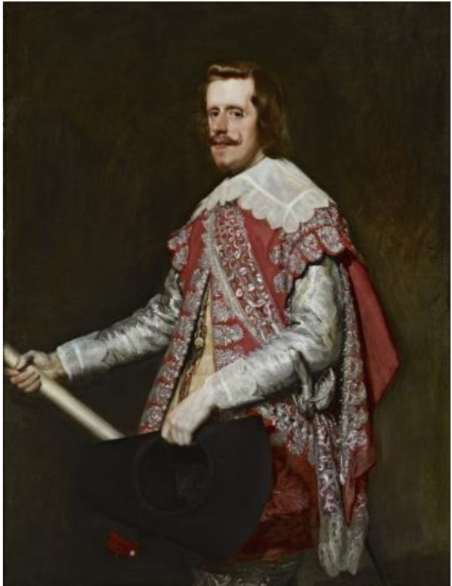
Diego Rodríguez de Silva y Velázquez, King Philip IV of Spain, 1644, oil on canvas, The Frick Collection, New York
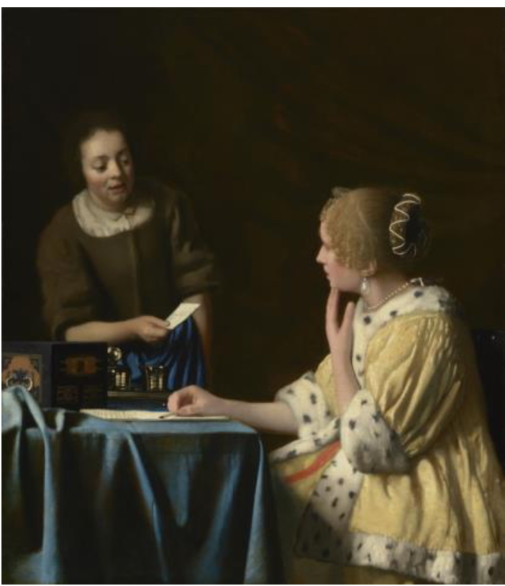
Johannes Vermeer, Mistress and Maid, 1666–67, oil on canvas, The Frick Collection, New York
~~~~~~~~~~~~~~~~~~~~~~~~~~~~~~~~~~~~
RARELY DISPLAYED WORKS OF FINE AND DECORATIVE ARTS
At Frick Madison all fourteen paintings of Fragonard’s Progress of Love series will be displayed together for the first time in the Frick’s history, including three panels that have been in storage much of the time since Mr. Frick purchased the set for his home in 1915. The series will be displayed to reflect its history, as it was created during two distinct campaigns, twenty years apart. The initial four canvases (1771–72) will be shown in a gallery adjacent to a room that displays the later ten canvases (ca. 1790– 91), a temporary arrangement that has never been possible in the Frick mansion.
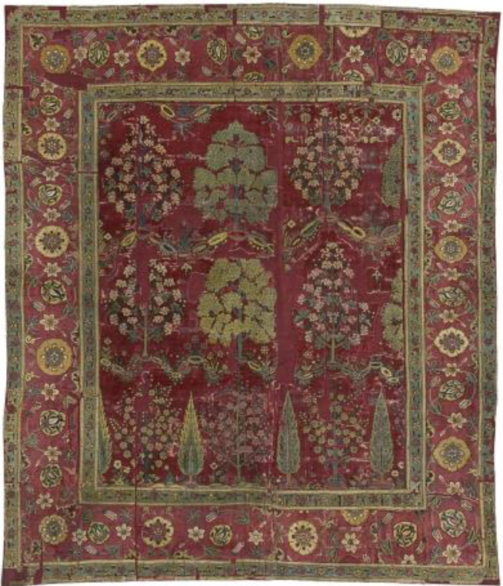
North Indian, Carpet, ca. 1630, silk (warp and weft) and pashmina (pile), The Frick Collection, New York
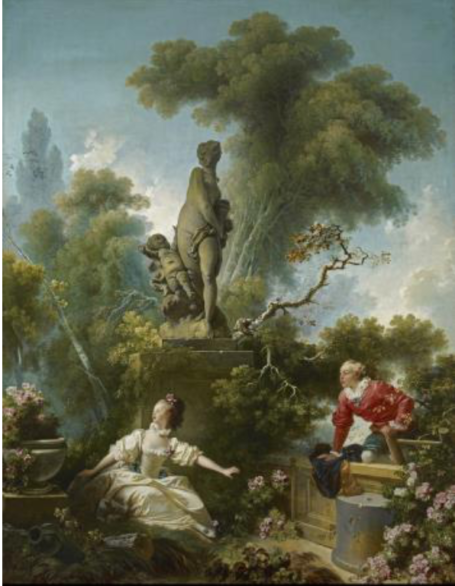
Jean-Honoré Fragonard, The Meeting (one panel in the series called The Progress of Love), 1771–72, oil on canvas, The Frick Collection, New York
The installation will focus renewed attention on less familiar areas of the collection, including two sixteenth-century Mughal carpets, one of which is an especially rare and remarkable example. Removed from the mansion’s domestic setting and thereby freed of the reminder of their practical function, these carpets will be hung on the walls like paintings, a display in keeping with their status as works of art of the highest quality. In the same manner, the installation will feature display areas and rooms dedicated by medium to significant works of French furniture, Asian and European porcelain, Renaissance bronze figures, portrait medals, French enamels and important European clocks. This mode of presentation will offer fresh insights on the breadth of decorative arts acquired by Henry Clay Frick and subsequent acquisitions made by the museum’s Trustees.
~~~~~~~~~~~~~~~~~~~~~~~~~~~~~~~~~~~~
THE FRICK REFRAMED IN AN UNEXPECTED SETTING
The approach of the installation also pays respect to the forms and materials employed by Breuer in this 1960s building, which was designed to house the Whitney Museum of American Art. Celebrated for his work in stone and concrete, the Hungarian-born architect was awarded this prestigious commission at the height of his career, aiming to provide a monumental sanctuary for art in a city known for constant change. Considered one of the most iconic mid- century modern buildings in New York, the Brutalist work, with its dramatic inverted form, suggests a very different museum experience than that offered by the Frick’s century-old Beaux Arts mansion on Fifth Avenue. The curatorial team views this as an opportunity to experience the Breuer’s space anew as well. Juxtapositions of the Frick’s masterpieces shown against a backdrop of distinct architectural features—such as Breuer’s signature angled windows—will celebrate the structure in new ways.
Heeding the building’s modernist principles of minimalism, harmony, and elegance, the exhibition design does not impose contrasting period rooms or residential elements onto the space. Instead, the materials used by Breuer are permitted to speak for themselves (having been beautifully restored by Beyer Blinder Belle for the building’s recent incarnation as The Met Breuer). The Frick’s plan employs a flow of larger and smaller gallery spaces that reflect the museum’s traditional emphasis on intimate encounters with masterpieces. Throughout this alternative Frick experience, visitors will enjoy numerous contemplative opportunities with both art and architecture. And, in keeping with the Frick’s display philosophy, the new Frick Madison presentation will allow direct access to art without the interference of vitrines and stanchions.
To enhance their Frick Madison experience, visitors can use a new audio guide available on the Bloomberg Connects App. Further details will be announced in the coming months, along with information about education and public programs, Frick Art Reference Library resources, and extended membership benefits.
~~~~~~~~~~~~~~~~~~~~~~~~~~~~~~~~~~~~
ABOUT THE FRICK’S RENOVATION AND ENHANCEMENT PROJECT
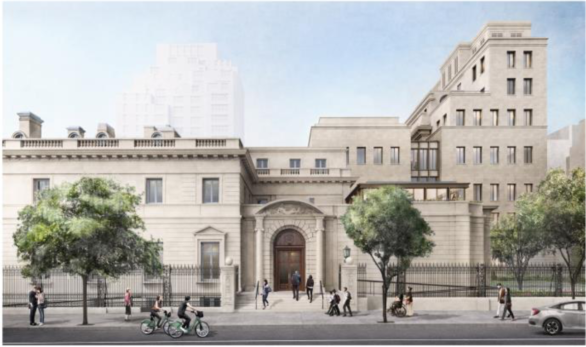
Rendering of The Frick Collection from East 70th Street
Honoring the architectural legacy and unique character of The Frick Collection, the plan designed by Selldorf Architects will provide unprecedented access to the original 1914 home of Henry Clay Frick, while preserving the intimate visitor experience and beloved galleries for which the Frick is known. Conceived to address pressing
institutional and programmatic needs, the plan will create critical new spaces for permanent collection display and special exhibitions, conservation, education, and public programs, while upgrading visitor amenities and overall accessibility throughout the Frick’s historic buildings. Preparatory work on the site will begin this fall, with construction scheduled to begin in the first quarter of 2021.
~~~~~~~~~~~~~~~~~~~~~~~~~~~~~~~~~~~~
ABOUT THE FRICK COLLECTION
Housed in one of New York City’s last great Gilded Age mansions, The Frick Collection provides visitors with an unparalleled opportunity for intimate encounters with one of the world’s foremost collections of European fine and decorative arts. The collection originated with Henry Clay Frick (1849–1919), who bequeathed his home, paintings, sculptures, and decorative arts to the public for their enjoyment. The institution’s holdings, which encompass masterworks from the Renaissance through the early modern period, have grown over the decades, more than doubling in size since the opening of the museum in 1935. Among these complementary acquisitions are many public favorites. A critical component of the institution is the Frick Art Reference Library, founded one hundred years ago by Helen Clay Frick, daughter of the museum’s founder. Recognized as one of the top resources of its kind in the world, it is open to researchers and the public alike.
——————- Image credits ——————-
Marcel Breuer building (page 1), courtesy of The Metropolitan Museum of Art; Frick Collection works by Michael Bodycomb; renovation rendering, courtesy of Selldorf Architects
~~~~~~~~~~~~~~~~~~~~~~~~~~~~~~~~~~~~

BASIC INFORMATION (THE FRICK COLLECTION IS CURRENTLY CLOSED)
General Information E-mail: info@frick.org
Web site: www.frick.org
Building project: www.frickfuture.org
Bloomberg Connects App: frick.org/interact/app
Museum mailing address: 1 East 70th Street, near Fifth Avenue
Frick Madison visitor address beginning early 2021: 945 Madison Avenue, near 75th Street
Tour information: A virtual tour of the Frick’s galleries is available on our website along with audio guide information in six languages: English, French, German, Italian, Japanese, and Spanish. Group Museum visits: Visit our website to learn more about virtual group visits.
Public Programs: A calendar of virtual and video events is available online.
Shop: The shop is open online, with some shipping delays under the current circumstances. Library mailing address: 10 East 71st Street, near Fifth Avenue
————-
==========================================


————
AAQ / Resource: Joseph Pagac Architect
_______________________________________________________
